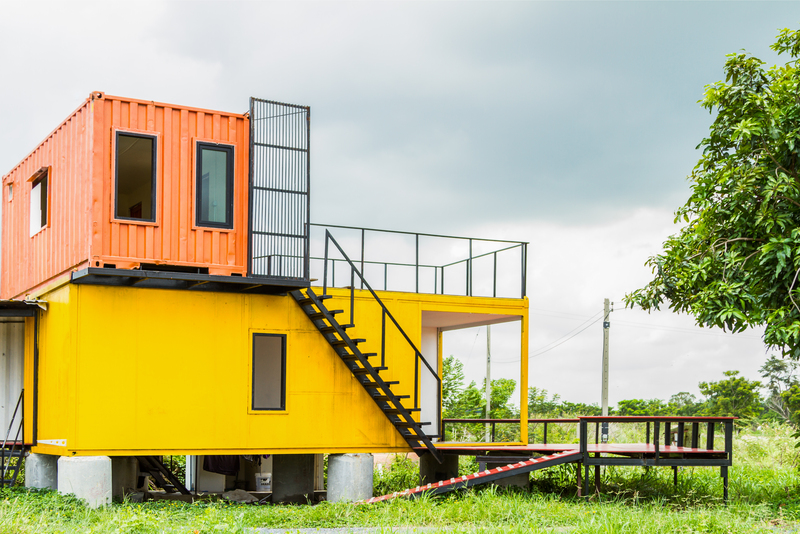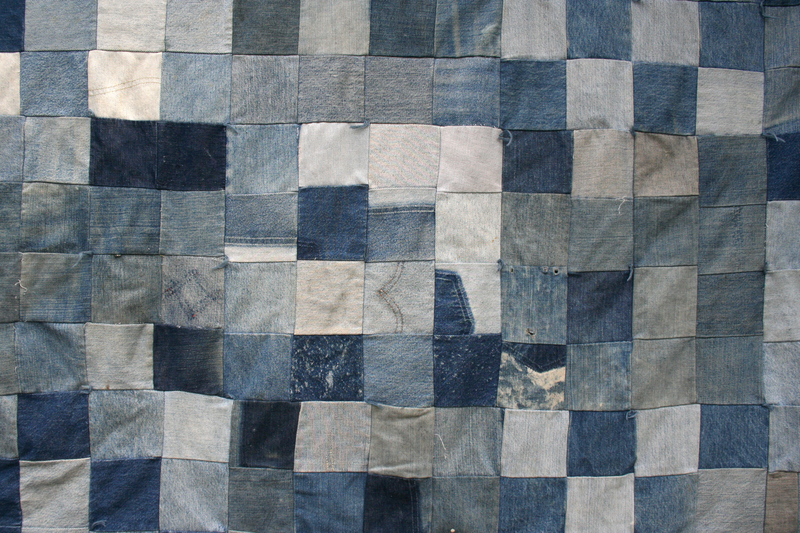Expert Strategies for Clutter Removal and Hoarder Clean Up That Transform Your Space
Clutter and hoarding not only occupy precious space but can negatively impact mental and physical well-being. Whether you are aiming to revitalize your home, office, or help someone struggling with hoarding disorder, effective clutter removal and hoarder clean up techniques can transform your environment and quality of life. In this guide, we reveal proven strategies, professional tips, and step-by-step plans to help you tackle even the most overwhelming organizational challenges confidently.
Understanding Hoarding and Chronic Clutter
Before diving into strategies, it's crucial to understand the differences between general clutter and hoarding. While clutter refers to the accumulation of unused or unnecessary items, hoarding is a complex behavioral condition involving the persistent difficulty in parting with possessions, regardless of their actual value.
- Chronic clutter: Typically results from busy lifestyles, lack of organization, or procrastination.
- Hoarding disorder: Involves emotional attachment, anxiety regarding dispossession, and often leads to hazardous living conditions.
Addressing these issues requires a tailored, respectful approach, especially for hoarder clean up scenarios. Sensitivity and empathy should guide every step, ensuring long-term success and well-being.

Why Declutter? The Transformational Power of a Tidy Space
A clutter-free space offers numerous benefits, including:
- Reduces stress and anxiety levels
- Improves focus and productivity
- Enhances safety and reduces trip hazards
- Boosts mood and mental health
- Increases usable space and property value
Expert clutter removal isn't just about aesthetics; it's about creating a healthier, happier space for yourself and your loved ones.
Expert Strategies for Effective Clutter Removal
1. Comprehensive Assessment and Planning
Every successful clutter removal project begins with a thorough assessment. Walk through your home or targeted space, noting problem areas and high-traffic zones. Create a checklist, set clear goals, and determine which items are essential, which can be donated, and which should be discarded.
- Set realistic timelines for each room.
- Prioritize spaces affecting daily life most, such as kitchens and bedrooms.
- Don't tackle everything at once; start small and build momentum.
2. The Four-Box Method
One of the most effective methods for decluttering and hoarding clean up is the Four-Box Method. Label four boxes or containers as follows:
- Keep: Items used regularly or hold significant value
- Donate/Sell: Items in good condition that no longer serve you
- Recycle: Materials that can be processed for reuse (paper, glass, electronics, etc.)
- Trash: Broken, expired, or unusable items
Work methodically through each area, sorting every item. This system streamlines decisions, reduces overwhelm, and ensures no stone is left unturned.
3. Room-by-Room Clutter Removal Techniques
Breaking down the clean up process by rooms helps maintain focus and organization.
- Living Room: Remove unused furniture, organize bookshelves, and eliminate old magazines. Store remotes, cords, and smaller items in decorative baskets.
- Kitchen: Clear countertops, dispose of expired food, and organize cabinets. Group similar items and maximize the use of shelf organizers.
- Bedroom: Rotate seasonal clothing, declutter bedside tables, and use under-bed containers for extra storage.
- Bathroom: Toss unused cosmetics and expired medications. Use drawer dividers and wall shelves to maximize space.
- Garage/Basement: Install shelving units, wall hooks, and clear bins with labels. Donate or dispose of broken tools and unused sports equipment.
4. Professional Organizer Insights
When facing severe clutter or a hoarding clean up situation, enlisting a certified professional organizer or specialized clean up crew can be life-changing. These experts bring:
- Non-judgmental support and privacy protection
- Customized decluttering plans
- Experience handling hazardous materials and biohazards
- Specialized equipment for safe removal and disposal
Many professional services also offer aftercare plans to help maintain your newly decluttered space, making relapse less likely.
5. Emotional Support During Hoarder Clean Up
Hoarding disorder is deeply emotional. Compassion, patience, and understanding are essential. Involve therapists or counselors if necessary.
- Never shame or rush the individual.
- Celebate small victories and progress milestones.
- Encourage ongoing counseling or support groups.
Maintaining a Clutter-Free and Organized Space
1. Daily and Weekly Habits
Consistent routines are essential for keeping spaces organized after clutter removal or hoarding clean up.
- Devote 10 minutes each day to tidying up surfaces.
- Implement a "one in, one out" rule for new purchases.
- Designate spots for keys, mail, and frequently used items.
- Sort through mail and paperwork weekly to avoid piles.
2. Smart Storage Solutions
Maximize your space with clever storage ideas:
- Install wall shelves and hooks for vertical storage.
- Use clear containers with labels for easy identification.
- Invest in multifunctional furniture like ottomans or beds with drawers.
- Utilize closet organizers and drawer dividers for clothing and small items.
3. Seasonal Purging and Digital Decluttering
Make it a habit to:
- Edit wardrobes at the change of seasons.
- Digitize important documents to cut down on paper clutter.
- Back up and organize digital files and photos regularly.
4. DIY vs. Professional Hoarder Clean Up
Not all situations require professional intervention, but identifying when to call in experts is vital:
- DIY Clutter Removal: Ideal for moderate clutter or maintenance. Use online resources, checklists, and accountability partners.
- Professional Hoarder Clean Up: Best for extreme or hazardous cases, especially if there's structural damage, significant health risks, or legal involvement.
Motivational Tips for Long-Term Success
- Set periodic reminders to reassess problem areas.
- Take before-and-after photos for motivation.
- Involve family or friends for extra support and accountability.
- Reward yourself after completing major milestones.
Overcoming Common Clutter Removal Obstacles
- Sentimental Attachments: Photograph special items before parting with them, or create a memory box.
- Overwhelm: Break large projects into smaller tasks and focus on progress over perfection.
- Lack of Time: Set a timer for short decluttering sessions, or schedule regular "power hours."
- Relapse: Accept that setbacks happen, and revisit your plan as needed.
Health and Safety in Hoarder Clean Up
Severe hoarding can create dangerous environments with risks such as mold, pest infestations, or even structural hazards. Prioritize safety and hygiene:
- Wear protective gear: gloves, masks, and sturdy footwear.
- Ventilate spaces during cleaning and disposal.
- Disinfect surfaces and dispose of waste responsibly.
- Contact professionals for biohazard remediation if required.
Legal and Environmental Considerations
- Check your local ordinances on large item disposal and hazardous waste.
- Donate usable items to certified charities or shelters.
- Recycle electronics and batteries appropriately to protect the environment.

Frequently Asked Questions about Clutter Removal and Hoarder Clean Up
-
Q: How long does a hoarder clean up take?
A: Timelines vary greatly depending on severity. Minor clutter can be addressed in a weekend, while extreme hoarding cleanup may require weeks or months. -
Q: Is it possible to declutter without professional help?
A: Yes, for most moderate situations. However, severe hoarding cases benefit from expertise and support. -
Q: What if my loved one refuses to address their hoarding?
A: Respect boundaries, encourage open conversation, and suggest counseling. Never force clean up without consent. -
Q: What costs are involved in professional hoarder clean up?
A: Professional services may range from hundreds to thousands of dollars depending on services, home size, and necessary repairs.
Conclusion: Reclaim Your Space and Your Peace
Transforming your space through clutter removal and hoarder clean up isn't just about creating order--it's about unlocking a sense of clarity, safety, and comfort. By using the expert strategies and practical tips outlined above, anyone can reclaim even the most challenging environments. Remember, the journey to a clutter-free, healthy, and empowering space is unique for everyone. Take the first step with compassion and determination, and let your transformed space reflect the best version of yourself!
If you're struggling with extreme clutter or hoarding, don't hesitate to seek professional guidance. Your journey to a serene, organized, and functional space starts today!
